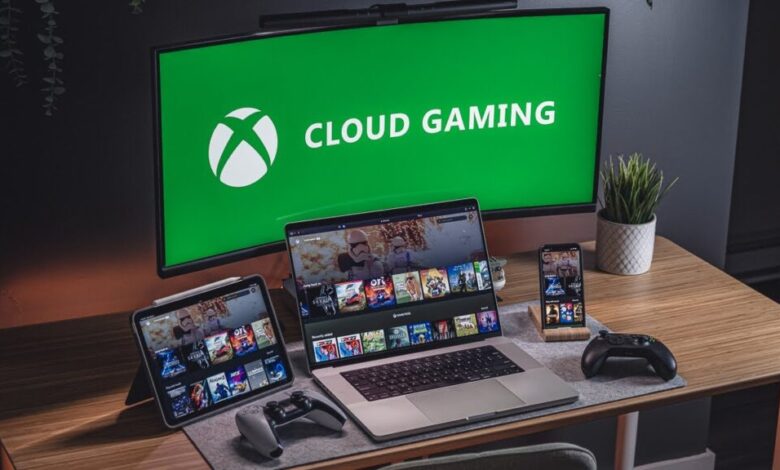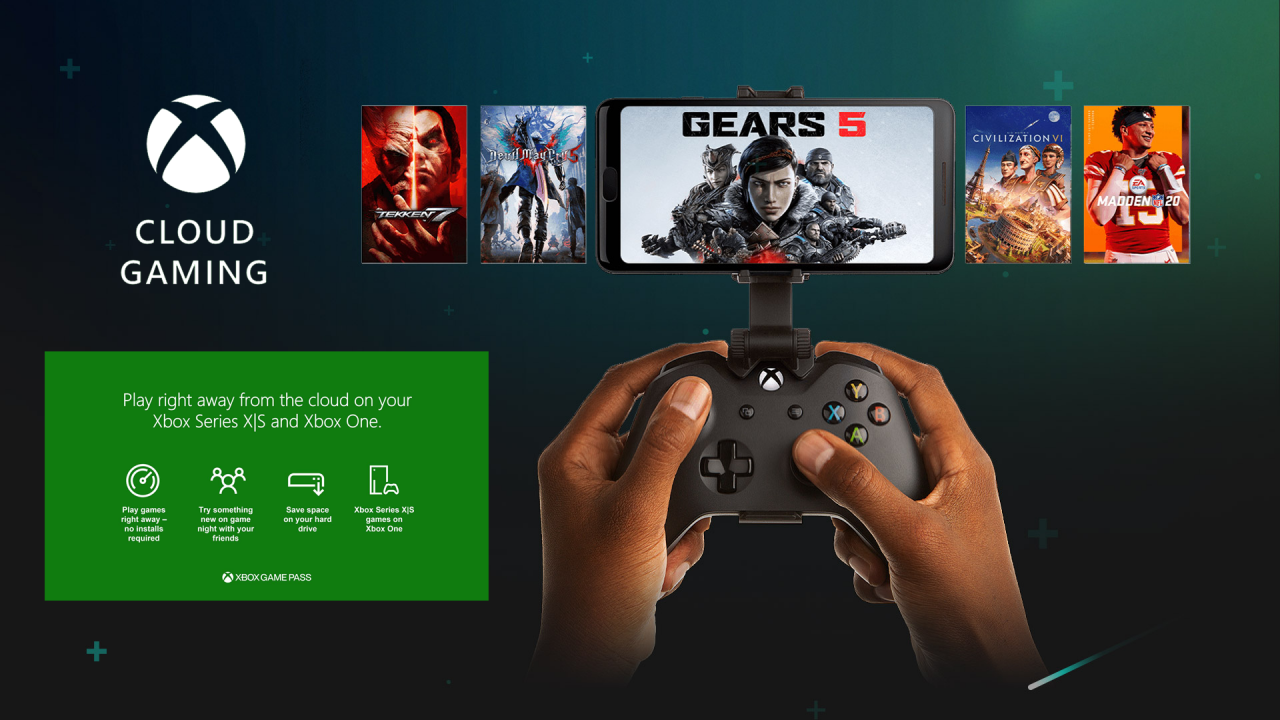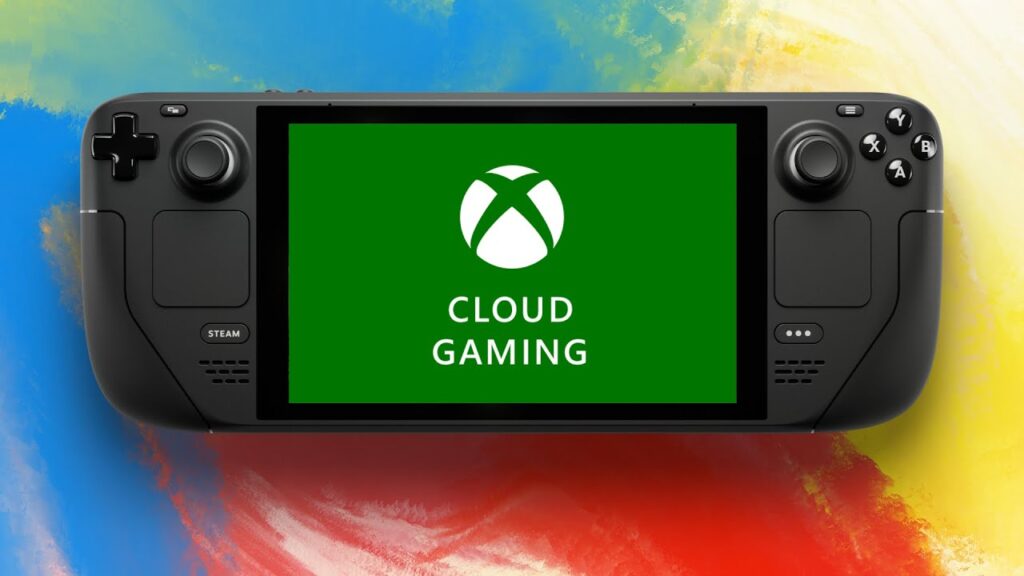Cloud Gaming: Redefining How We Play Forever

The gaming world is perpetually evolving, but few shifts have been as fundamentally disruptive as the arrival of cloud gaming. It’s a technology that promises to free us from the limitations of expensive hardware, massive downloads, and constant updates.
No longer is your ability to play the latest triple-A title tied to the size of your GPU or the speed of your local storage. Instead, the game exists somewhere else—on a powerful, remote server—and is streamed directly to whatever screen you happen to have, much like watching a movie on Netflix.
This isn’t just an incremental upgrade; it’s a complete paradigm shift that redefines accessibility, portability, and the economics of video games.
Cloud gaming isn’t just about convenience; it’s about democratization. It levels the playing field, making high-fidelity experiences available to anyone with a stable internet connection, regardless of whether they own a top-tier console, a mid-range PC, or even just a standard smartphone.
This transition represents one of the most exciting, yet complex, movements in the history of interactive entertainment.
Unpacking the Technology: How Cloud Gaming Works

At its core, cloud gaming operates on a simple, elegant principle known as remote rendering. This system cleverly separates the heavy computational work from the user experience, transforming what was once a localized, hardware-dependent activity into a seamless streaming service.
The Four Stages of Cloud Play
When you press “Start” on a cloud gaming service, a rapid, complex chain of events is initiated across vast networks:
A. Input Transmission
The process begins locally. When you move your joystick, click your mouse, or press a button on your controller, that input signal is instantly packaged and sent across the internet to the remote server farm.
This signal must travel incredibly fast; any delay here is experienced as input lag, the bane of the cloud gaming experience. The quality of your local network connection, specifically its latency (the delay before a transfer of data begins), is paramount at this stage.
B. Remote Processing and Rendering
The input signal arrives at a server blade (a specialized computer within the data center) equipped with cutting-edge CPUs, RAM, and powerful GPUs (Graphics Processing Units)—often much stronger than those found in consumer consoles.
The server executes the game, renders the frames at maximum quality (often 4K at 60 frames per second), and simultaneously processes the game’s AI, physics, and world state. The game never runs on your local device.
C. Video Encoding and Compression
Once the frame is rendered on the server, it must be rapidly converted into a compressed video stream. This is where high-efficiency video codecs (like H.264 or H.265) come into play.
The server encodes the stunning visuals into a streamable format in real-time. This step is a critical balancing act: the stream must be compressed enough to travel quickly over the internet but maintain enough quality to look pristine on your screen.
D. Decoding and Display
The compressed video data is sent back across the network, arriving at your local device (be it a smart TV, phone, tablet, or old PC). Your device’s relatively modest processor decodes the video stream and displays the rendered frame on your screen.
Because this process happens continuously, you perceive the action as if the game were running locally, despite the kilometers separating you from the hardware.
The Architecture Behind the Experience
To support millions of simultaneous users playing graphically demanding games, cloud gaming services rely on colossal and complex infrastructure far beyond a typical consumer setup.
The Foundation: Data Centers and Hardware

Cloud gaming requires proprietary, high-density hardware housed in strategically located data centers around the globe.
A. Geographical Proximity and Edge Computing
Latency is the critical killer of cloud gaming. To minimize the time inputs and video signals travel, data centers must be located as close as possible to the user base.
This trend drives edge computing, where processing power is placed geographically closer to the “edge” of the network (the consumer), significantly reducing round-trip time. A difference of just ten milliseconds can determine whether a first-person shooter feels responsive or sluggish.
B. Specialized Server Blades
These are not typical web servers. Cloud gaming relies on custom-built racks designed for high-density, high-power processing.
- A. GPU Density: Server blades are packed with professional-grade GPUs optimized for concurrent rendering tasks. They must efficiently switch between rendering demands for dozens or even hundreds of users on a single rack.
- B. Virtualization Technology: Advanced virtualization layers ensure that each player is allocated a stable, dedicated slice of the server’s resources. This prevents one demanding user from degrading the performance experienced by others on the same physical hardware.
C. Adaptive Bitrate Streaming
The network connection quality is rarely static. Cloud services use adaptive bitrate technology to dynamically adjust the stream quality based on your current bandwidth.
If your connection temporarily dips, the system will instantly and automatically lower the resolution (e.g., from 4K to 1080p) to maintain a stable framerate and responsiveness, rather than allowing the stream to freeze entirely. This continuous adjustment is key to maintaining playability under real-world conditions.
The Core Benefits: Redefining Accessibility
The fundamental appeal of cloud gaming lies in solving the most persistent barriers that have traditionally segmented the gaming audience.
The Democratization of Gaming
A. Hardware Agnosticism
This is the central promise: the game runs on the cloud, not on your device.
- A. Eliminating Upgrade Cycles: Consumers no longer need to spend hundreds or thousands on new GPUs, CPUs, or consoles every few years to keep up with the latest releases. Your old laptop, inexpensive tablet, or even a basic smart television can become a de facto high-end gaming rig.
- B. Console Bridging: Cloud services often allow console owners to access their libraries on non-console devices, extending their play sessions far beyond the living room.
- C. Reduced Entry Cost: The barrier to entry shifts from a large, upfront capital investment in hardware to a manageable, monthly subscription fee.
B. Instant Access and Zero Downloads
The days of waiting hours for a 100GB game file to download, followed by an hour-long patching process, are swiftly fading.
- A. Play Immediately: Since the game files are already hosted and patched on the remote server, you can literally click an icon and start playing a massive game within seconds. This immediacy fundamentally changes the way people sample and interact with games.
- B. Storage Freedom: Local storage concerns become irrelevant. Since the game is never stored on your device, you can play dozens of huge games without ever worrying about clearing space on your hard drive.
C. Seamless Portability and Cross-Platform Play
Cloud gaming makes true anytime, anywhere gaming a reality, provided you have adequate internet access.
- A. Device Hopping: You can start a game on your office PC, pause it, pick up your phone on the bus, and seamlessly resume exactly where you left off, continuing later on your living room smart TV—all without saving files or transferring data.
- B. Simplified Cross-Play: Because the platform handling the game rendering is uniform (the cloud server), the inherent complexities of cross-platform multiplayer compatibility are often simplified or handled entirely by the service provider.
Challenges and Roadblocks to Mass Adoption
Despite the technology’s elegance and its immense benefits, cloud gaming is still navigating significant technical and logistical hurdles that affect its performance and long-term viability.
The Triple Threat: Latency, Bandwidth, and Content
A. The Unforgiving Nature of Latency
As previously mentioned, latency (the round-trip time for a signal) is the single greatest determinant of the user experience.
- A. The Competitive Barrier: For genres requiring millisecond precision, such as competitive First-Person Shooters (FPS) or Fighting Games, even the slightest noticeable lag makes the experience unplayable against local hardware users.
- B. Geographical Limitations: Users located far from existing data centers, or those in regions with poor network infrastructure, may find the technology functionally useless until local data centers are built. The quality of the local router, Wi-Fi signal, and Internet Service Provider (ISP) management all play an oversized role.
B. Bandwidth Requirements and Data Caps
Streaming high-definition video that updates based on player input is incredibly data-intensive.
- A. High Data Consumption: Streaming a 1080p game at 60 FPS can consume well over 10GB per hour, and 4K streams consume significantly more. For users with strict ISP data caps, cloud gaming can quickly become an unaffordable luxury.
- B. Contention and Jitter: Cloud gaming struggles on networks with heavy contention (many users sharing the bandwidth) or significant jitter (inconsistent delays between packets). These issues result in noticeable artifacting, screen tearing, or complete stream degradation.
C. The Content Library and Platform Fragmentation
Unlike video streaming services where content ownership is relatively straightforward, game licensing is complex, leading to fragmented content libraries.
- A. Licensing Complexities: Publishers must specifically license their games for cloud streaming on each platform, and these agreements are expensive and constantly expiring. This means one cloud service may have a game that another doesn’t, frustrating subscribers.
- B. The “Walled Garden” Problem: Major platform holders often restrict access to their own ecosystems, meaning popular exclusive titles (like those from Sony or Nintendo) may never be available on third-party cloud services, regardless of the technology’s capabilities.
The Future Landscape: Consolidation and Evolution
Cloud gaming is no longer a niche curiosity; it is a major battleground for the world’s largest tech and entertainment companies, all vying to become the “Netflix of Games.”
The Key Players and Models
The market is currently defined by different approaches to pricing, infrastructure, and content strategy:
A. The Subscription Model (Xbox Game Pass Ultimate)
Microsoft’s strategy leverages its proprietary Azure cloud infrastructure and the immense value proposition of Xbox Game Pass Ultimate.
- A. All-Inclusive Access: Users subscribe to a monthly fee that includes both the massive downloadable library (Game Pass) and the ability to stream those games via the cloud (Cloud Gaming). This is currently the most compelling package deal.
- B. Vertical Integration: Since Microsoft owns the content (Xbox Game Studios), the cloud infrastructure (Azure), and the devices (Xbox consoles, Windows), they can offer a highly optimized and unified ecosystem.
B. The Bring-Your-Own-Games Model (NVIDIA GeForce NOW)
NVIDIA takes a completely different, highly consumer-friendly approach focused purely on technology and power.
- A. PC Ecosystem Focus: GeForce NOW allows users to stream games they already own on existing PC storefronts (like Steam, Epic Games Store). It acts as a remote, high-end virtual gaming PC, not a content provider.
- B. Latency Prioritization: NVIDIA heavily focuses on extremely low latency and high performance, often offering top-tier GPU performance that is technically superior to many competitors for dedicated gamers.
C. Dedicated Hardware Solutions (Sony PlayStation Plus Premium)
Sony uses its cloud service primarily as a feature to enhance its existing console ecosystem and to provide access to its extensive back catalogue of older titles.
- A. Backwards Compatibility via Cloud: The service is often used to stream PS3, PS2, and classic PS titles that are difficult to emulate locally, serving as a powerful legacy library tool.
- B. Integration: Their service is heavily integrated with the PlayStation brand, focusing on supplementing the console experience rather than entirely replacing it.
The Democratization of Game Development
Beyond consumption, cloud infrastructure is fundamentally changing the way games are created.
- A. Remote Collaboration: Developers worldwide can now collaborate on massive, complex projects without needing all the necessary computing power locally. Remote development environments accelerate testing and iteration.
- B. Scaling Server Load: Indie and mid-sized studios can utilize cloud services to manage unpredictable server loads for their multiplayer games without having to purchase and maintain excess physical infrastructure, making global releases significantly easier and cheaper.
Conclusion
Cloud gaming is less about replacing consoles and PCs entirely, and more about filling the vast gaps in accessibility, convenience, and affordability that have always existed in the industry.
It should be viewed not as a competitive replacement, but as an additive layer that makes gaming more liquid, more portable, and more ubiquitous.
The trajectory is clear: as 5G and fiber optic networks continue their global expansion, the latency barrier will shrink to insignificance for a majority of the global population.
This convergence of high-speed connectivity and powerful, centralized computing is creating the unbound gaming ecosystem. Within the next decade, the default assumption will likely shift: why would you download and store a game locally if you can instantly access the latest, highest-fidelity version on any screen you own?
The implications are cultural as well as technological. Cloud gaming will further accelerate the trend of gaming as a service, focusing the market on the long-term value of subscriptions and content libraries over the episodic purchase of hardware.
For developers, this shift liberates creativity, allowing them to design games that rely on the assumption of vast, scalable cloud resources, potentially leading to truly massive, persistent worlds that are technically impossible to run on any single consumer device.
Ultimately, cloud gaming is about lowering the friction to play. It transforms gaming from an expensive hobby requiring dedicated space and hardware into a fluid entertainment medium available whenever and wherever a connection exists.
This newfound simplicity will invite billions more people into the interactive world, expanding the audience for game developers exponentially and ensuring that the creative energy of the industry continues to grow unhindered by the traditional restraints of silicon and plastic. The console is becoming optional; the game is becoming universal.